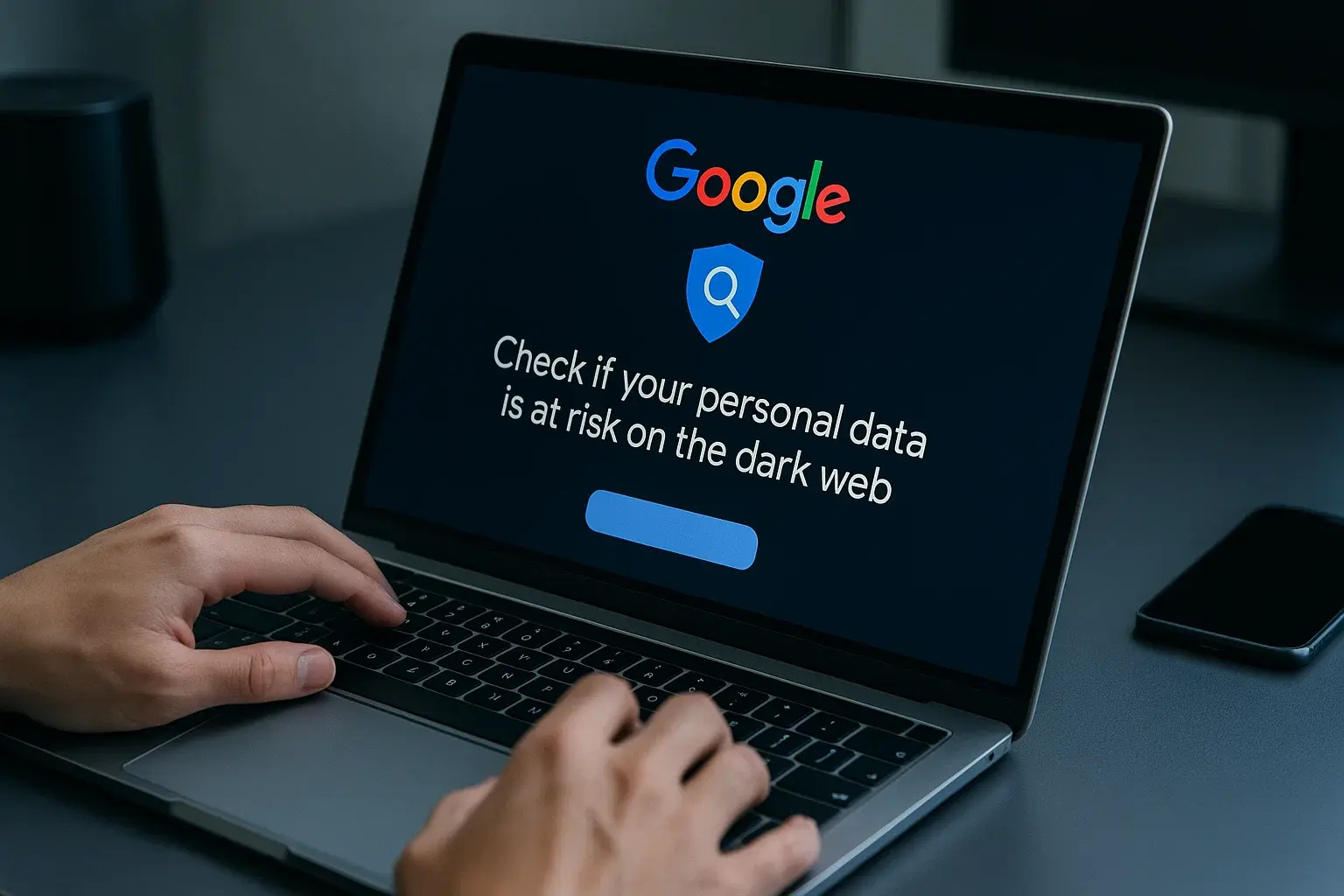The possibility of your personal data ending up on the dark web is no longer a distant scenario—it’s a growing reality. Names, emails, passwords, phone numbers, and even sensitive documents are bought and sold on underground forums as if they were ordinary commodities. What’s even more alarming is that, often, you don’t find out until it’s too late.
Recognizing this threat, Google launched a free tool that allows you to check if your data has been leaked and is circulating on the dark web. At TecnetOne, we want to explain how it works, why it’s important to use it, and what steps you should take if your information has been compromised.
Why Having Your Data on the Dark Web Is So Dangerous
The dark web is that hidden part of the internet that can’t be accessed through conventional search engines like Google or Bing. It’s home to forums, markets, and communities where cybercriminals sell and distribute stolen data. This goes beyond email addresses and passwords—it includes credit card numbers, tax information, physical addresses, and even medical records.
The risks are far-reaching:
- Identity theft, used to open fraudulent accounts.
- Financial fraud, like unauthorized loans or purchases.
- Unauthorized access to your work or personal accounts.
- Extortion or harassment, especially when highly sensitive data is leaked.
And the worst part? You may already be compromised without knowing it—data breaches often go undetected for months.
Learn more: Chrome Zero-Day CVE-2025-6554 Actively Exploited: Update Now
Google’s Tool: How It Works
To address this threat, Google introduced the Dark Web Report, a feature within Google One. It scans dark web sources to see if your personal data appears in known breaches.
- Available for personal Google accounts (not for Workspace or supervised accounts).
- Currently supported in some countries and on Android devices, with iOS support on the way.
- You can choose which types of data to track: name, address, phone number, email, usernames, etc.
The tool scans the dark web periodically, and alerts you if any of your info is found. To preserve your privacy, the data is masked, showing only what’s necessary for you to identify and assess the risk.
How to Use It Step by Step
If you already have Google One, using the Dark Web Report is easy:
- Go to one.google.com or open the Google One app on Android.
- Look for the “Dark Web Report” section.
- Click “Try now”, then select “Run scan.”
- Authorize scanning for the data you want monitored (email, name, etc.).
- Wait a few minutes for the scan to complete.
- Review the results to see what data was found and in what context.
Armed with this information, you can act fast to protect yourself.
Similar titles: Google Hit by Data Breach Following Salesforce Attacks
What to Do If Your Data Was Leaked
Knowing your data is on the dark web doesn’t mean damage is done—but it does mean you need to act quickly:
Change Your Passwords
Immediately update passwords for affected accounts. Use strong, unique combinations of letters, numbers, and symbols. Never reuse passwords.
Enable Two-Factor Authentication (2FA)
Even if your password is stolen, 2FA adds another barrier—usually a code sent to your phone—to keep attackers out.
Review Your Security Settings
Check your account’s security panel for unauthorized logins or connected devices you don’t recognize.
Stay Vigilant
Watch for suspicious activity: unexpected emails, password reset requests, or unfamiliar banking transactions.
Be Wary of Unsolicited Messages
Cybercriminals often use stolen data to craft personalized phishing emails or text messages. Don’t click links or download attachments from unknown sources.
What Makes This Tool Different?
While there are other dark web monitoring services, Google’s tool stands out because it’s integrated into its ecosystem. This means:
- Real-time alerts without relying on third-party subscriptions.
- A centralized risk dashboard inside Google One.
- Personalized recommendations based on detected threats.
- Privacy-preserving scanning, so your data isn’t further exposed.
At TecnetOne, we see this as a major step toward building a preventive cybersecurity culture. Prevention is always better than damage control.
Why This Matters for Businesses Too
You might think this is just a personal issue—but leaked employee data is one of the most common entry points for attacks on companies.
If you’ve used your corporate email for external services and that data ends up on the dark web, you could be exposing your organization to serious threats.
That’s why we recommend that companies:
- Enforce strong password policies and continuous security training.
- Use trusted password managers to prevent reuse.
- Implement corporate-level dark web monitoring to catch breaches early.
- Require multi-factor authentication on all critical apps.
While Google’s tool is great for individuals, businesses should complement it with professional-grade security solutions that protect their entire infrastructure.
Conclusion
Your personal data is valuable—and cybercriminals are after it. With tools like Google’s Dark Web Report, you now have the power to check if your information has been leaked and take action before it’s too late.
Changing passwords, enabling 2FA, and staying alert can make the difference between falling victim to fraud or staying safe online.
At TecnetOne, we believe data protection is not a luxury—it’s an urgent necessity in today’s connected world.


